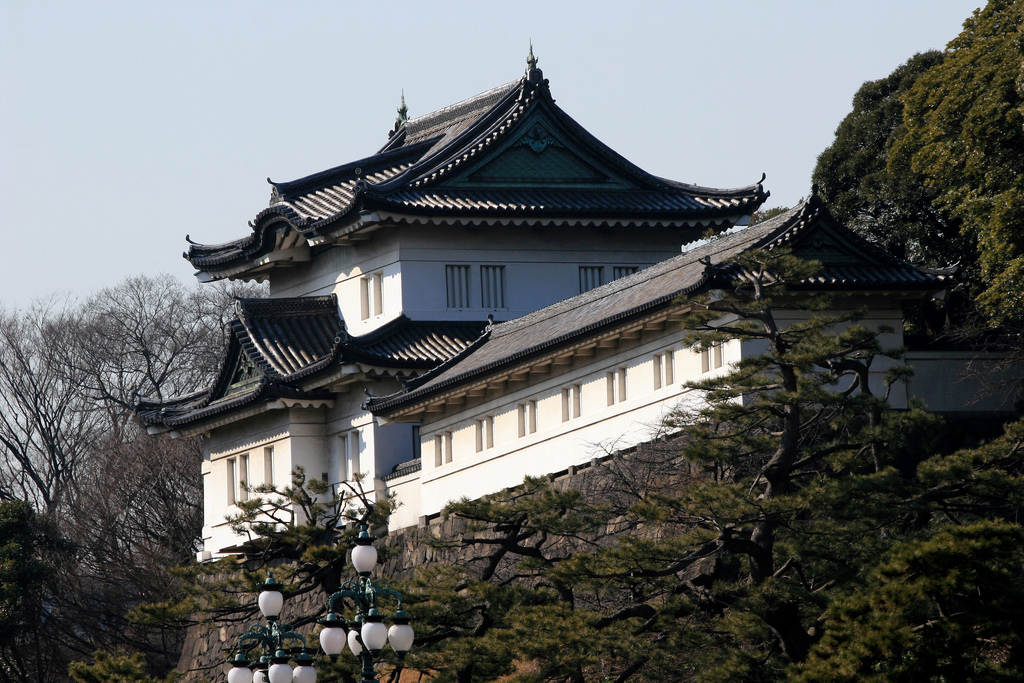
Imperial Palace
The Imperial Palace is the residence of the Japanese Emperor and his family. Built in 1457, it became the home of the Tokugawa shoguns and was the military center for most of Japan’s history. After the Meiji Restoration, it became the home of the imperial family. Now visitors are welcome into some sections of the grounds, but most are still closed to the general public.
The most famous view is Nijubashi, or the official entrance bridge. It is approached by a vast plaza of gravel and evergreen trees. In the densely packed city, this empty space is a subtle example of the emperor’s status. It was also historically designated to be the length of a good archer’s shot, so that assassination attempts were less possible. You will notice that there are still no tall buildings close to the moat or walls, though rifles and other weapons have made this precaution symbolic more than practical.
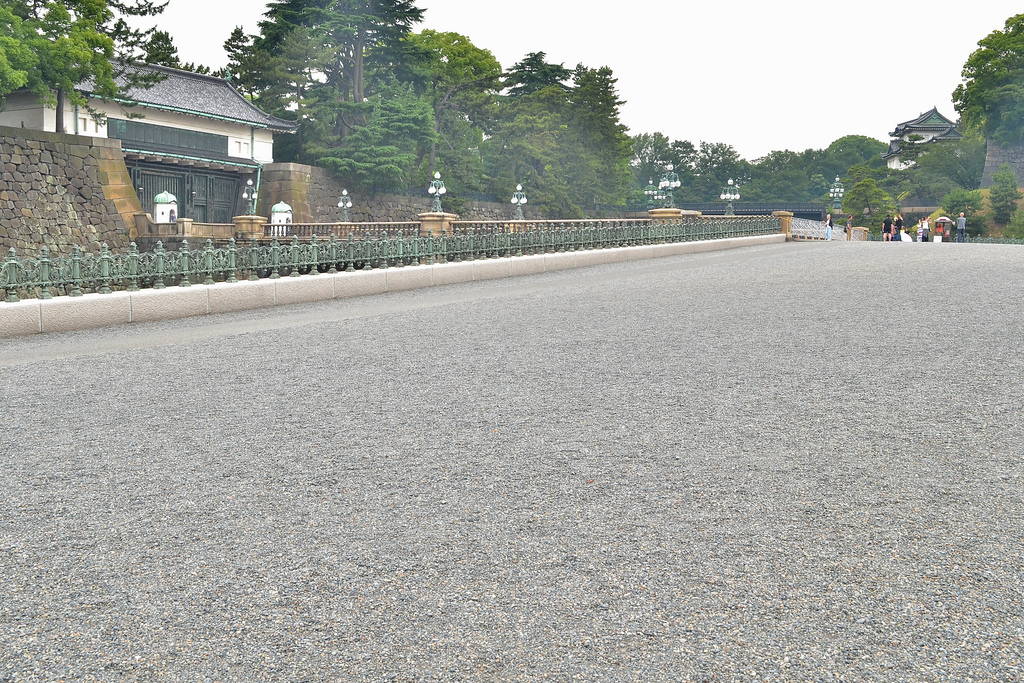
二重橋 (Nijubashi Bridge at the Palace)
The East Garden is usually open to the public, except on Fridays and occasions when it is used to entertain foreign dignitaries. The garden is free, though when you enter you receive a numbered card which you must return upon exiting. When you first enter the Otemachi Gate, there is a museum on the right that has a rotating exhibit from the Imperial collection. It is small and only labeled in Japanese, but the art is of the highest quality. After the museum you will see a rest house on the right, be sure to pick up a pamphlet describing the various parts because the East Garden is a wealth of history.
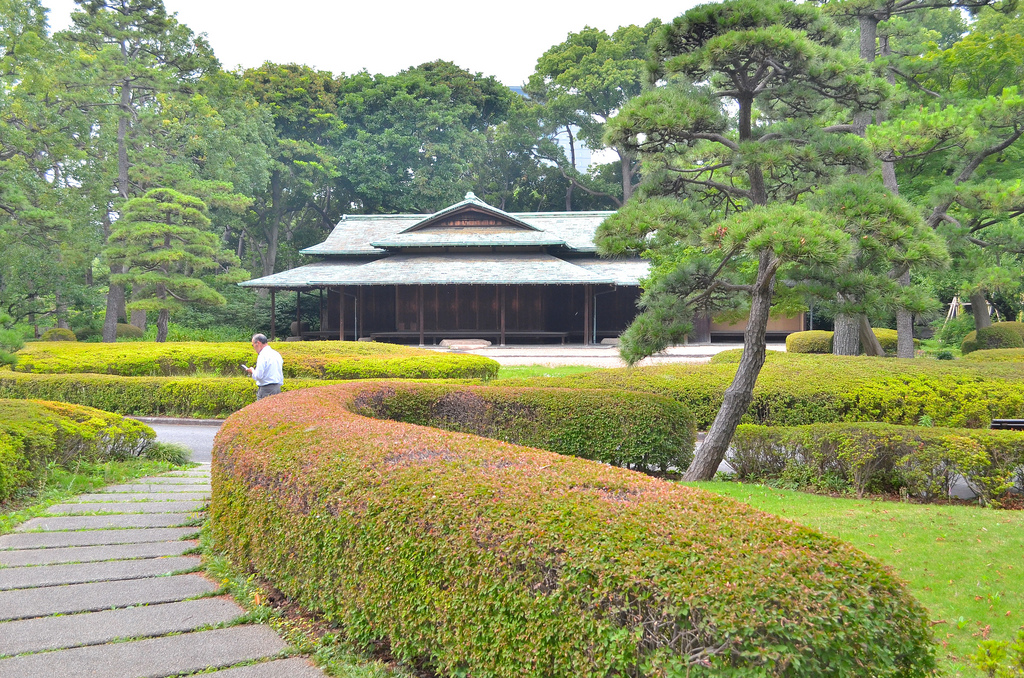
皇居東御苑 諏訪の茶屋 (The East Gardens of the Imperial Palace)
Opposite the rest house is the martial arts training hall, so don’t be surprised if you hear the screams of guards practicing kendo and judo. As you continue your walk, you will see huge rock walls, guard houses, store houses, rare plants, a little pond with koi, and groves of trees and bamboo. Of special note are the remains of the original Edo Castle main building’s foundation and a historic tea house that is still used for special occasions.
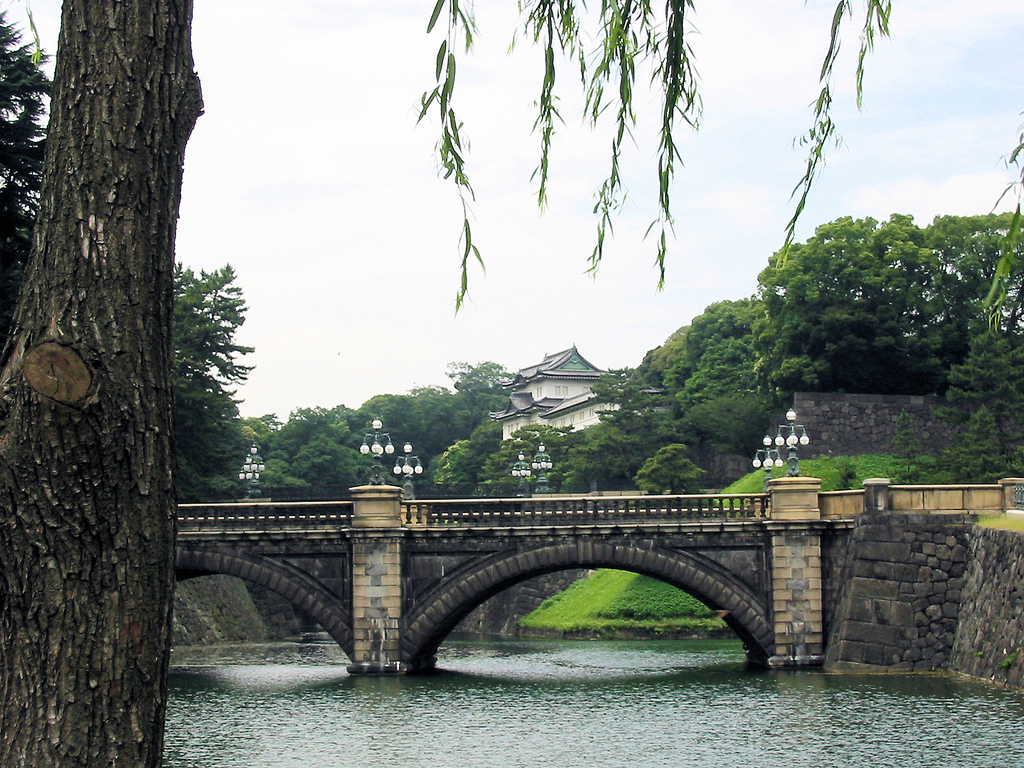
Nijubashi bridge
The garden has a wealth of plants from all over Japan, and there is almost always something in bloom. The cherry trees and azaleas are especially beautiful in spring, and early June has a spectacular show of irises edging the pond.
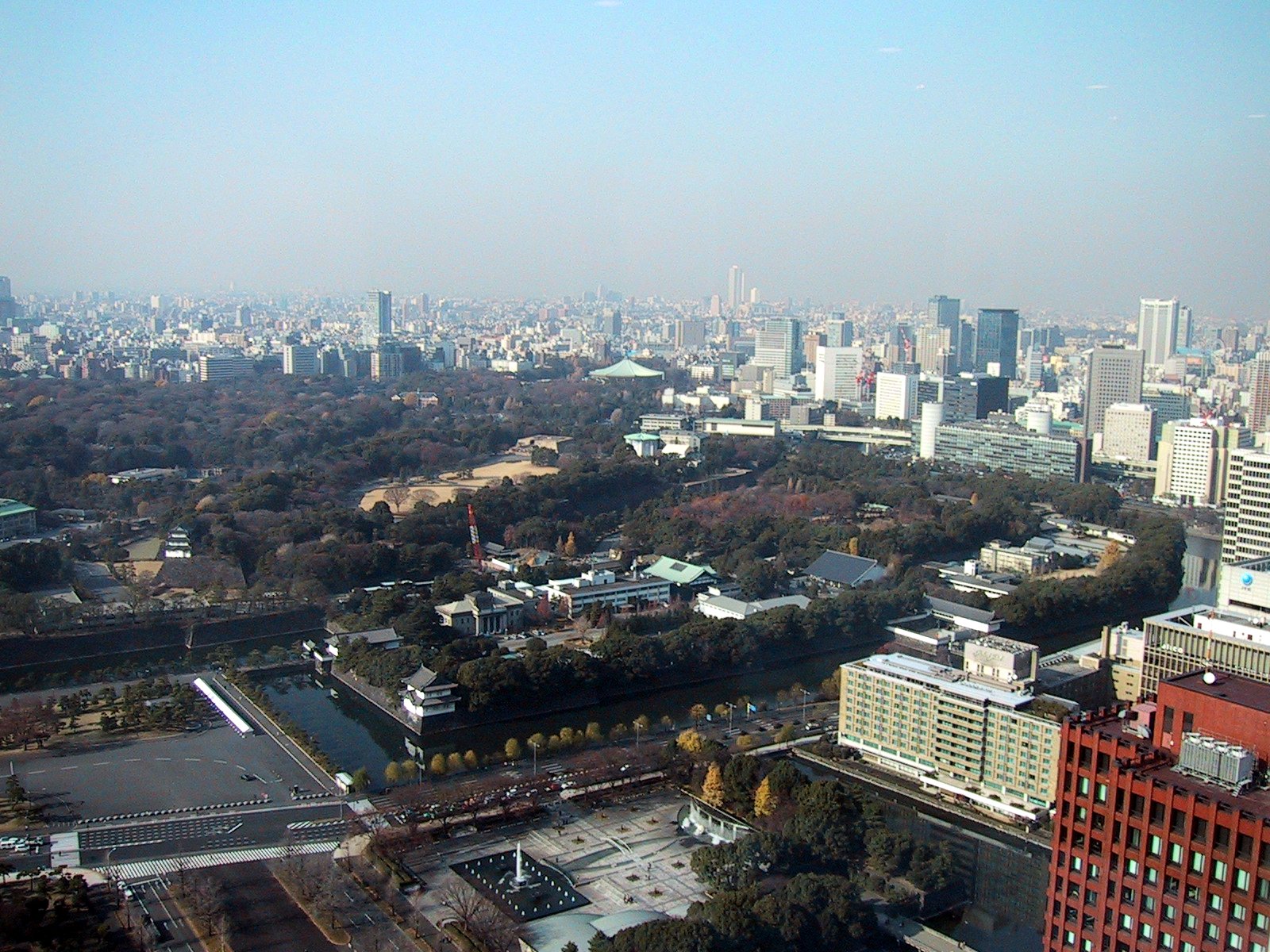
For more information about the Imperial Family and visiting the palace and other Imperial villas, the Imperial Household Agency is: http://www.kunaicho.go.jp/eindex.html
Getting there: The Imperial Palace is in the heart of Tokyo. Its vast size means that you can reach the moat and walking path around the palace by any number of stations. However, to most easily get to the East Gardens, use the Otemachi Subway station, serving the Toei Mita line and the Tokyo Metro Chiyoda, Tozai, Marunouchi, and Hanzomon lines.
 photos by:
michaelvito &
Dakiny,
Dakiny,
Stéfan
photos by:
michaelvito &
Dakiny,
Dakiny,
Stéfan